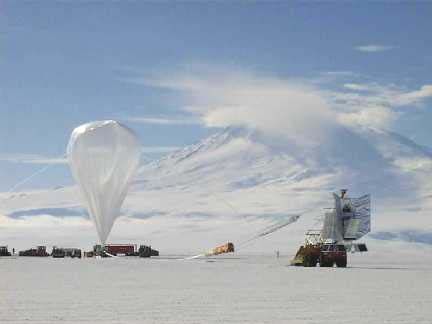The Case for Dark Matter
The Geometry of the Universe and Structure Formation

CMB data collected by the balloon-based BOOMERanG and MAXIMA experiments provided crucial evidence in support for the existence of both dark matter and dark energy.
Detailed measurements of the CMB power spectrum reveal that the Universe has a nearly perfectly flat geometry. Estimates of the total luminous matter density are far too low to account for this geometry, one more reason that scientists believe there must be dark matter
Another piece of evidence that we have already seen is the crucial role dark matter plays in theories about structure formation. Currently, no alternative theories exist which can explain the timing of galactic formation without a minimum amount of dark matter.
The Unusual Suspects: Dark Matter's True Identity
What do scientists think the true identity of dark matter is?
Currently, there is a consensus among cosmologists that DM exists and is physically composed of some yet-to-be-discovered non-baryonic fundamental particle. It cannot be said with absolute certainty that DM is non-baryonic because, due to ionization and the Universe's redshift, we are not yet able to send out electromagnetic waves far enough into space to observe their interaction with DM. As of today, the proposed composition of dark matter falls under two categories of fundamental particles:
- Hot Dark Matter (HDM) candidates include low mass fundamental particles which can travel at relativistic velocities (near the speed of light). For years one such particle, the light neutrino, was a leading suspect. However, current theories about structure formation cast doubt on most HDM candidates.
- Cold Dark Matter (CDM) candidates include heavier fundamental particles as well as large compact objects such as brown dwarf stars and primordial black holes. WIMPS (Weakly Interacting Massive Particles) are high mass particles which only interact via gravity and the weak force. Extensions to the Standard Model incorporating supersymmetry predict the existence of WIMPs, requiring that each known fundamental particle have a heavier supersymmetric partner. If they exist, these partner particles are considered to be leading CDM candidates.


